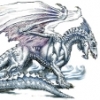return {
file="Optimus.png",
height=62,
description={
family="Optimus",
style="Regular",
size=32
},
metrics={
ascender=46,
descender=-16,
height=62
},
texture={
file="IM:Textures:1:Textures/Optimus.png",
width=512,
height=256
},
chars={
{char=" ",width=13,x=1,y=39,w=0,h=0,ox=0,oy=0},
{char="!",width=10,x=2,y=9,w=8,h=30,ox=0,oy=30},
{char='"',width=20,x=11,y=9,w=17,h=11,ox=0,oy=30},
-- so on...
},
}
I don't see where the return keyword followed by the table would put the table in the global enviroment and can't seem to shed light on it from my lua book and googling. I am trying to parse it in luaj api and am in need of knowing where are the table is stored in the global enviroment after running the script. I do know that technically, a function in lua is a closure assigned to a variable. I would peronally just use the three tables as global variables here, but now I am quite curious what the original author did here.
Thanks,





